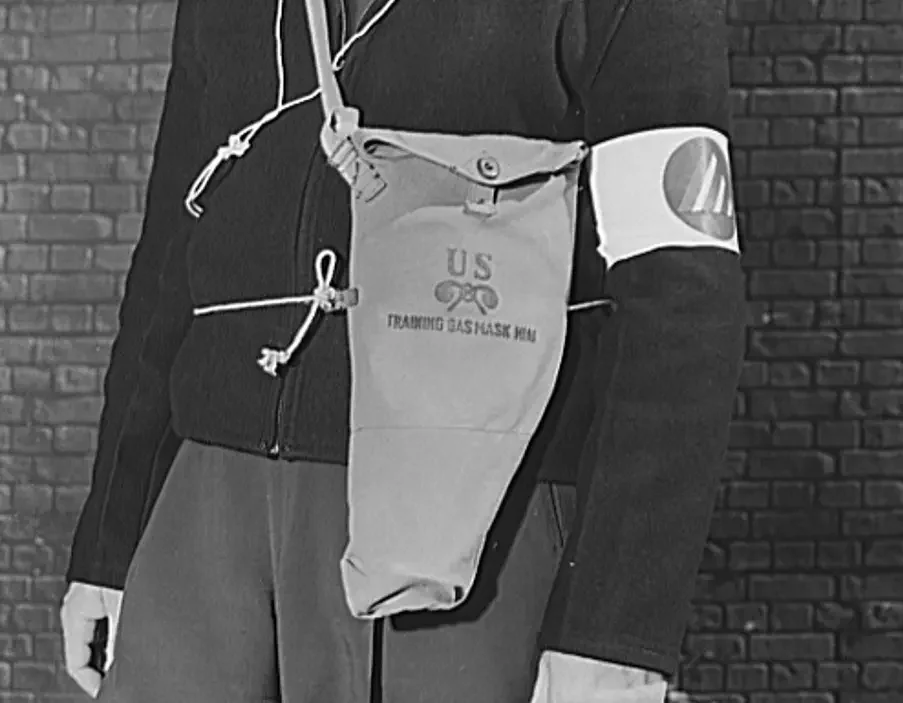Office of Civilian Defense Noncombatant Gas Mask MI2A-I-I
With poison and chemical weapons expected to be used by the enemy, the Office of Civilian Defense (OCD) arranged for a mass-produced non-combatant gas mask to be manufactured. The initial cost to manufacture the thousands of gas masks required the government to set aside almost $30 million.
Randolph Monro (1890-1954) designed the gas mask, and it was first issued in 1942 (with a patent issued in 1944). Monro designed many of the protective gas masks issued by the US government during World War II.
The gas mask (issued as the MI2A-I-I) featured a rubberized fabric frontispiece with integral circular celluloid eyeholes (lenses), an exhale outlet valve and elastic six-point head harness. For children, the M2-2-1 gas mask had a singular celluloid eyepiece plus an exhale outlet valve directly under it.
The gas masks featured an aluminum filter casing filled with activated charcoal. Instructions for use were printed on the casing. It was estimated the gas mask could be worn for four hours before the filter was exhausted.
The gas masks were issued in a cardboard box along with a small 16-page booklet.
A canvas carrier was also issued with an adjustable shoulder strap. The gas mask carrier featured ‘US’ letters, the US Chemical Warfare Service emblem of two chemical retorts and a benzene ring, plus the gas mask’s size. Early versions of the carrier featured a drawstring to tighten the carrier to the body (see image below).
Adult sizes were LARGE ADULT and MEDIUM ADULT only. Most found these days are marked MEDIUM ADULT.
Children’s gas masks were marked CHILD.
A large number of the MIA2 gas masks were never issued. New and boxed examples can still be found today.
Note: gas masks from the period must never be worn or used due to the risk of particles in the filter being released.














